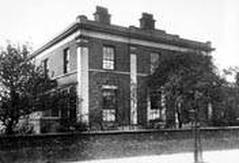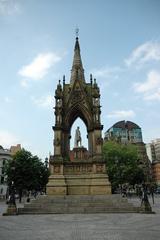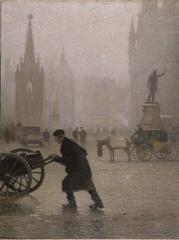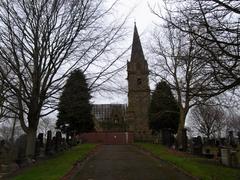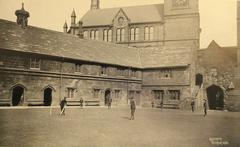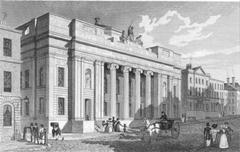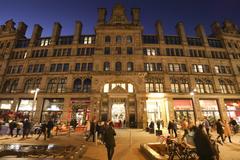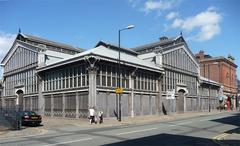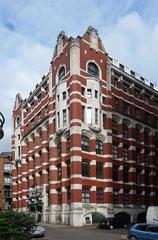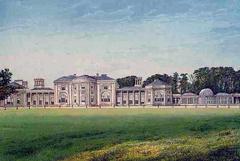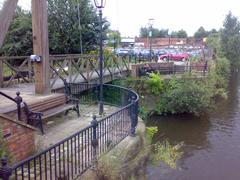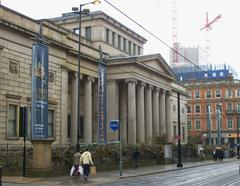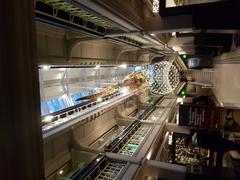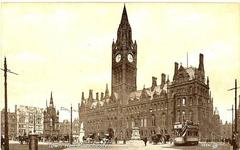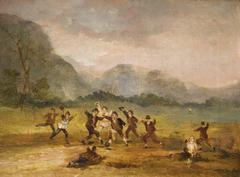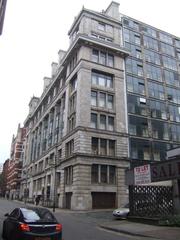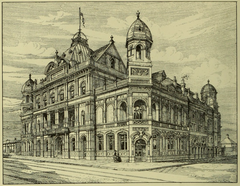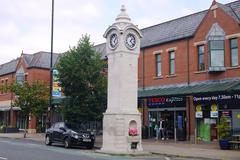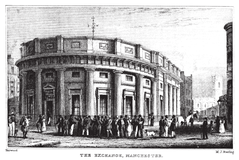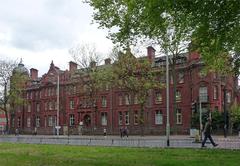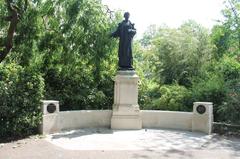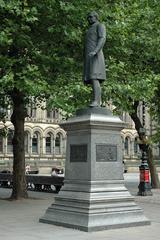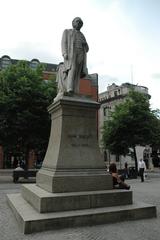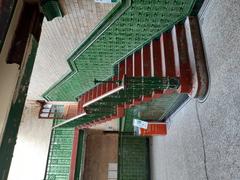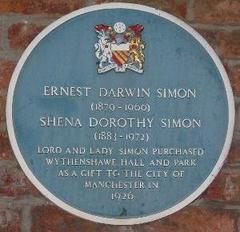Stockport Branch Canal Visitor Guide: Hours, Tickets, and Historical Sites in Manchester
Date: 15/06/2025
Introduction
The Stockport Branch Canal, a historical waterway in Greater Manchester, UK, is a lasting emblem of the region’s industrial heritage and urban transformation. Originally built in the late 18th century to facilitate the transport of coal and manufactured goods between Manchester and Stockport, the canal was instrumental in the industrial growth of North West England. Spanning approximately five miles from Clayton Junction on the Ashton Canal to Stockport Basin, this lock-free canal once served bustling mills, factories, and engineering works, including the famous Gorton locomotive works.
Although no longer navigable by boat, the canal’s preserved remnants—such as stone aqueducts, bridges, and canal walls—have been transformed into a scenic green corridor for walking, cycling, and heritage exploration. Today, the canal’s legacy is safeguarded by organizations like the Manchester and Stockport Canal Society, whose efforts focus on preservation, public access, and restoration advocacy.
This comprehensive guide provides an in-depth look at the canal’s history, current visitor information—including access, guided tours, and accessibility—nearby attractions, and practical tips. Whether you’re planning a leisurely walk, seeking heritage events, or exploring Manchester’s industrial past, this resource will equip you with all you need to appreciate the enduring charm and cultural importance of the Stockport Branch Canal. For the latest updates, guided tour schedules, and restoration news, consult the Manchester and Stockport Canal Society, Wikipedia, and the Canal & River Trust.
Historical Overview
Origins and Authorization
The Stockport Branch Canal emerged from the late 18th-century canal-building boom. The Ashton Canal’s main line, authorized by the Manchester and Oldham Canal Act of 1792, set the stage for future extensions. In March 1793, the Manchester and Stockport Canal Act (33 Geo. 3. c. 21) enabled the construction of the Stockport Branch, a branch to Hollinwood, and a proposed Beat Bank Branch to serve coal mines at Haughton Green, with additional funds raised for expansion (Wikipedia).
Construction and Route
Construction began in the mid-1790s under James Meadows. The Hollinwood Branch opened in late 1796, with the Stockport Branch following in January 1797 (Wikipedia). The canal diverged from the Ashton Canal at Clayton Junction, running southeast through Gorton, Abbey Hey, and Reddish, and ending at Stockport Basin near Lancashire Hill. Its lock-free design enabled efficient transport along a roughly five-mile route (Waterways.org.uk).
Industrial Significance
The canal was vital for transporting coal, raw materials, and finished goods to and from Manchester and Stockport’s industries. It notably intersected with the Gorton locomotive works and supported the region’s thriving mills, textile factories, and engineering workshops. The lock-free canal allowed for smooth, timely cargo movement, facilitating industrial growth (CanalRiverTrust.org.uk).
Decline and Closure
With the advent of railways in the mid-19th century, canal traffic declined. By the early 20th century, use was limited, with some activity near the Gorton Workshops until the 1960s. Eventually, much of the canal was infilled or built over, and Stockport Basin was redeveloped (Wikipedia).
Surviving Features and Heritage
Remnants can be found along footpaths and green corridors through Gorton, Abbey Hey, and Reddish. Surviving features include stone bridges, aqueducts (notably one near Gorton, renewed in 1905), and canal walls (CanalWorld.net). The Manchester and Stockport Canal Society (established in 2004) preserves these legacies through interpretive plaques, heritage walks, and community maintenance (MSCS.org.uk).
Restoration Efforts
Feasibility studies, such as one by Atkins in 2006, have shown restoration is technically possible. Despite challenges—such as mining subsidence and urban development—restoration is seen as a catalyst for urban regeneration, with potential recreational and environmental benefits (CanalJunction.com).
Visitor Information
Visiting Hours and Access
The canal’s footpaths and green spaces are open year-round with no entrance fees or tickets required. Public access is generally available from dawn to dusk, but visitors should check local conditions, especially during winter.
Accessibility
Many sections, particularly through Gorton and Abbey Hey, are flat and suitable for wheelchair users and families. Some areas may have uneven surfaces or steps; for detailed accessibility advice, consult the MSCS website or local visitor centers.
Guided Tours and Events
The Manchester and Stockport Canal Society organizes regular guided walks, heritage days, and volunteer events. These offer insights into the canal’s history and restoration efforts. Event details and booking information are available on the MSCS website and social media.
Photographic Highlights
Key photo locations include the surviving stone aqueduct at Gorton, canal bridges with historic plaques, and green corridors at Abbey Hey. Early morning and late afternoon are ideal for photography.
Walking the Route: What to Expect
- Clayton Junction: Start your walk at the junction with the Ashton Canal, featuring historic locks and bridges.
- Gorton Reservoir: Enjoy waterside views and nearby cafés.
- Debdale Park: A large urban park with playgrounds and picnic spots.
- Reddish: Features historic mills like Houldsworth Mill and the model village with St Elisabeth’s Church.
- Lancashire Hill: The original terminus, where industrial remnants and redeveloped spaces provide a glimpse into the past.
The towpath offers mostly level terrain, suitable for walkers, cyclists, and families. The section from Clayton to Debdale Park is the most accessible.
Accessibility and Facilities
- The towpath is generally flat and surfaced with a mix of paved and compacted earth paths.
- Parking is available near Clayton and Debdale Park.
- Public transport options include the Droylsden Metrolink Tram Stop and Stockport Transport Interchange.
- Facilities include restrooms (mainly at Debdale Park and select cafés), seating, and picnic tables.
Nearby Attractions
- Hat Works Museum: Explore Stockport’s hat-making heritage.
- Portland Basin Museum: Exhibits on regional canal and industrial history (CanalRiverTrust.org.uk).
- Bramall Hall: Historic manor house with gardens and woodland walks.
Points of Historical Interest
- Surviving canal structures such as bridges and aqueducts, especially near Gorton and Reddish.
- Historic mills: Houldsworth Mill, Albert Mill, and Albion Flour Mill.
- Heritage plaques and interpretive signage along the route.
Maps and historical photos are available at events and online to help visualize the canal’s history.
Wildlife and Green Spaces
The canal corridor supports urban wildlife, including moorhens, coots, kingfishers, and a variety of native plants (Stockport Hub). The path is lined with trees and wildflowers, providing a peaceful retreat.
Guided Walks and Events
Local societies offer guided walks and heritage events, particularly in spring and summer. For schedules and booking details, visit the Bugsworth Basin Heritage Trust website or the MSCS website.
Practical Tips
- Wear comfortable shoes and weather-appropriate clothing.
- Bring a camera for historic and wildlife photography.
- Combine your visit with adjacent attractions or canal walks, such as Marple Locks or the Ashton Canal.
- Download the Audiala app for self-guided audio tours and up-to-date event information.
Frequently Asked Questions (FAQ)
Q: Can I walk along the Stockport Branch Canal?
A: Yes, the canal towpath is open year-round and is a popular green corridor.
Q: Are there any entrance fees or tickets required?
A: No, access is free. Guided tours or special events may require advance booking.
Q: Is the canal accessible for people with disabilities?
A: Many sections are flat and suitable for wheelchair users; some areas may be uneven. Consult the MSCS for details.
Q: Are guided tours available?
A: Yes, organized by local societies. Check their websites for event schedules.
Q: What should I bring?
A: Comfortable footwear, weather-appropriate clothing, water, and a camera. Facilities are limited along the route.
Responsible Visiting
- Keep dogs on leads where indicated.
- Dispose of litter responsibly.
- Respect local residents and wildlife.
- Avoid climbing on fragile heritage structures.
Useful Resources and Further Reading
- Stockport Branch Canal - Wikipedia
- Ashton Canal and Stockport Branch - Canal & River Trust
- Former Stockport Canal Gorton Boat Dock - CanalWorld.net
- Manchester and Stockport Canal Society
- Restoration Feasibility - CanalJunction.com
- Bugsworth Basin Heritage Trust - Walks and Restoration
- Stockport Hub - Marple Locks Canal Walk
- Visit Manchester - Top 5 Walks in Stockport
- Marple Website - Local Heritage
- Drifters Waterway Holidays - Canal Boat Holidays 2025
Conclusion
The Stockport Branch Canal is a hidden gem within Greater Manchester—a blend of industrial heritage, natural beauty, and community spirit. Walk its towpaths to experience a unique slice of history, join a guided walk for expert insights, or simply enjoy a peaceful retreat in the city. The preservation work of local societies ensures that the canal’s story continues to inspire current and future generations. For more information, maps, and event updates, visit the Manchester and Stockport Canal Society and Canal & River Trust.
